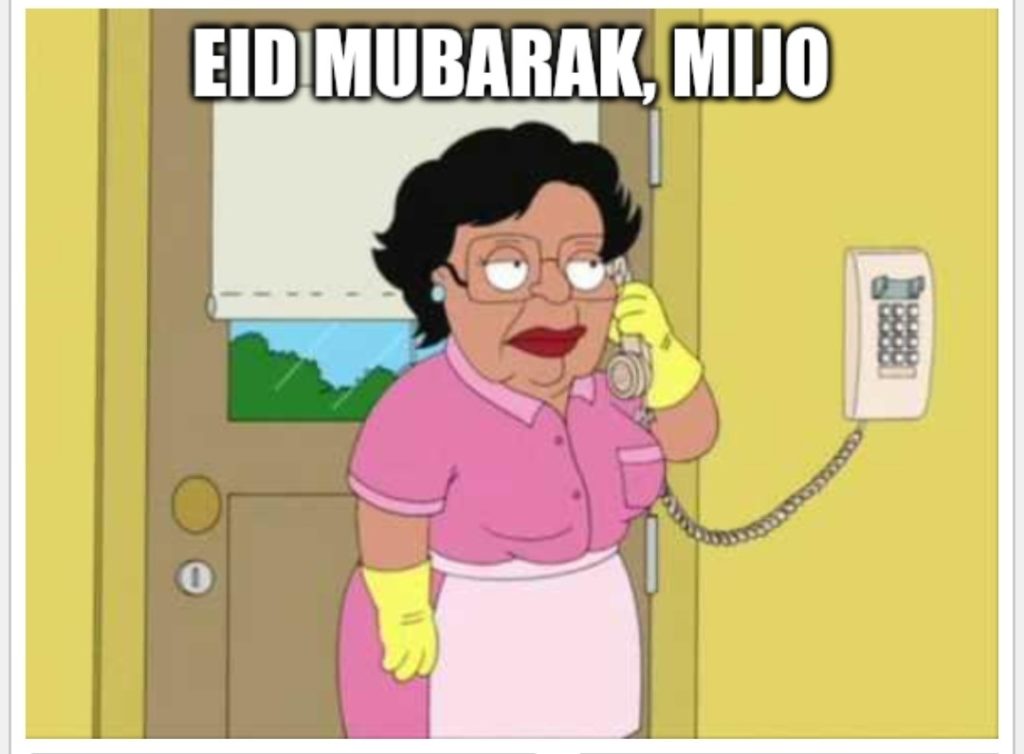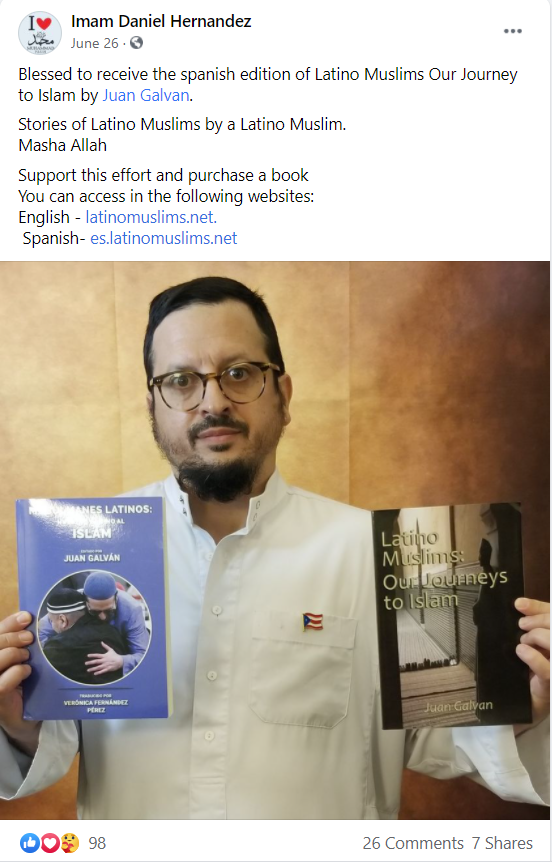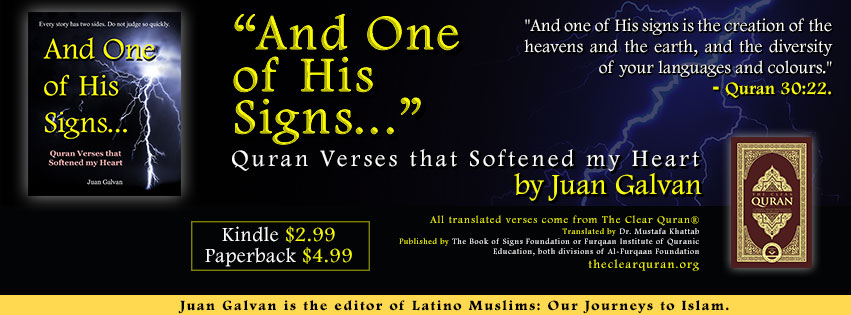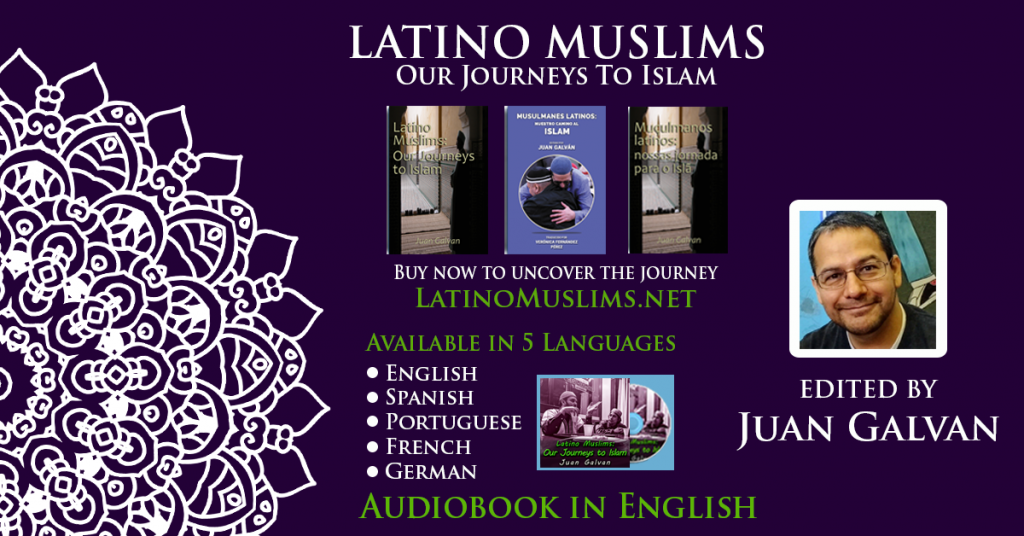By Wendy Diaz
August 7, 2024
On the scorching summer day of July 9, 2024, high above the clouds at 35,000 feet, I finished the book Alianza Islámica: Spanish Harlem’s Hispanic Odyssey. I was traveling back home to what the pilot called “El Calentón,” the sweltering Caribbean heat of Puerto Rico. The story of Alianza Islámica is about an extraordinary group of young Muslim Puerto Ricans in the heart of New York who, against all odds, formed a community unlike anything the nation had seen. The book, compiled by Rahim Ocasio and Juan Galvan, uses previously published articles, exclusive interviews, and personal narratives to tell “the story of Alianza Islámica in their own words.” Its release is long overdue; next year marks 40 years since members of Alianza Islámica, the first known formal Latino Muslim organization and mosque in Spanish Harlem, organized an event called Reclamando Nuestra Herencia Islámica (Reclaiming Our Islamic Heritage). This event, held at Spanish Harlem’s Museo del Barrio in 1985, effectively publicized the presence of Latino Muslims and encouraged Latinos to explore their Islamic heritage. The literary project brings together a wealth of voices that give life to the journey of its founders and the people they served.

My first encounter with Alianza Islámica was around 2002. I had the pleasure of meeting the family of one of its founders and co-author of Alianza Islámica: Spanish Harlem’s Hispanic Odyssey, Rahim Ocasio. As a bright-eyed, fresh new Muslim in my early ‘20s, I was unfamiliar with the experiences of my predecessors, pioneering figures like Rahim Ocasio, Hajj Yahya Figueroa, Mark Ortiz, Muhammad Mendez, and Ibrahim Gonzalez. In my naivete, I had wondered if I was the only Puerto Rican Muslim in existence. I later learned that not only was I not alone, but I was part of a wave of Latino conversion that began as far back as the 1920s, but with an even greater surge since the 1960s.
My introduction to Islam came in the late ‘90s, learning about African American Muslim figures like Malcolm X and Muhammad Ali. I later met an Egyptian Muslim family and after investigating more, I eventually accepted Islam. My exposure and conversion came by way of what Ocasio calls “Suburban Islam,” a phenomenon that began with Arab and South Asian migrations and the establishment of Islamic cultural centers outside the stronghold of the inner cities where Islam sprouted from the efforts of African American and later Latino Muslims.
This “Urban Islam” is where Alianza Islámica was born. The movement began with a group of Puerto Rican teenagers, who were brought up in a very different time and place, finding Islam in none other than El Barrio in Spanish Harlem. Alianza Islámica: Spanish Harlem’s Islamic Odyssey begins here, in a predominately Latino inner city setting; its first chapter provides the official story of its history juxtaposed with the modern institutions steeped in the idea of Suburban Islam of Latin-American Muslims today. As Ocasio witnessed the grand opening ceremony of the IslaminSpanish Islamic Center in Houston, Texas in 2016, he wrote, “Decades ago, in the early 1990s, another Latino Muslim center opened in the heart of New York’s Spanish Harlem, but to no fanfare, speeches, ceremonial ribbon cuttings, dignitaries, or honored guests. Neither newspapers nor television networks covered it, and news of its inauguration probably spread no further at the time than the curious glance of a passerby” (p. 6). Nevertheless, in subsequent years, Alianza Islámica would become the largest and most influential Latino-run organization in the US.
The original Alianza Islámica, meaning Islamic Alliance, was founded in the late 1980’s in East Harlem, New York, to support Latino converts to Islam. The group emerged from a broader context of social justice movements, including the Civil Rights Movement and the rise of Black and Latino nationalism. Its founding members, Mark Ortiz, Freddie (Ibrahim) Gonzalez, Ramon (Rahim) Ocasio, and John (Yahya Abdul Latif) Figueroa, aimed to create a space for Latinos who had embraced Islam to connect with one another and navigate the intersection of their ethnic and religious identities. Ocasio writes that Figueroa assumed the leadership of the organization, motivated by a desire to address the unique challenges faced by Latino Muslims, who often felt marginalized within both the local communities and the broader Muslim community – a reality that sadly prevails to this day.
Alianza Islámica was steeped in activism, providing religious education, social services, and community support to aid Latino Muslims in developing a strong sense of identity and belonging. Ocasio said, “Alianza’s style was a hands-on, face-to-face street approach. [Yahya Figueroa] employed techniques to increase exposure and interest” (p. 17). By the ‘90s, they had acquired a storefront and transformed it into an outreach center and mosque. There were periodic caminatas or walks around the neighborhood in which brothers and sisters would participate to give visibility to their growing numbers. They offered GED classes, ESL instruction, health services, and job training. These activities played a crucial role in raising awareness about Islam within the Latino community, challenging stereotypes, and fostering greater understanding and acceptance. According to Ocasio, “We wanted to bring the word of Allah to the people, to our people, who were underserved” (p. 17). Alianza Islámica became more than just a religious organization; it was a cultural and social lifeline for many Latino Muslims.
The organization was instrumental in providing support and guidance to many individuals who found Islam despite significant challenges in their lives. Among those were recovering drug addicts, former convicts, and HIV and AIDS sufferers. These individuals were not defined by their past struggles but were instead seen as resilient and courageous members of the inner city, who had fallen victim to the pervasive drug abuse and crime that characterized the 1970s and ‘80s. Alianza Islámica’s efforts were rooted in the Islamic principles of compassion and justice, recognizing that these individuals, like many others, were striving to overcome their circumstances and build better futures for themselves and their families.
Throughout the 212 pages of the book, Ocasio, Figueroa, and others proudly tell the story of Alianza Islamica’s foundation from their own perspectives. Exclusive interviews and transcribed conversations between Alianza members give readers an intimate look into the outer as well as the inner motivating factors that drove them to create and sustain this pioneering community. In summary, Alianza Islámica: Spanish Harlem’s Islamic Odyssey, illustrates the dynamic and evolving nature of Latino Muslim identity in the US from the 1960s until now. By addressing the unique needs of Latino converts to Islam and fostering a supportive atmosphere, the organization left an enduring mark on both the Latino and general body of Muslims in America. Figueroa wrote:
“From the very start, Alianza sought to combat the social conditions faced by our people with the dynamic spiritual teachings of Islam… It was a spiritual-cultural center aiming to revive and rediscover the soulful treasures of Al-Andalus (Islamic Spain). In its most successful period, we served approximately one hundred families, many of them single disenfranchised young people. Hundreds of other transients were touched profoundly as well” (p. 27).

Courtesy of Latinodawah.org
Despite its significant contributions, Alianza Islámica faced numerous challenges over the years. Internal conflicts, financial difficulties, and broader societal changes all played a role in the organization’s eventual decline from 2000 to its final closing in 2005. As a reader and Latino Muslim history enthusiast, I wished the book provided a more detailed explanation of why Alianza Islámica dissolved, beyond its relocation from Spanish Harlem to the Bronx. What transpired within Alianza after September 11, 2001, for instance? Why did the members disband, and why was there never an attempt to return to Spanish Harlem? If Alianza Islámica is lauded as the paradigm of the ideal Latino Islamic community in America, I would like to understand how new generations of Latin American Muslims can address similar setbacks.
Nevertheless, the legacy of Alianza Islámica endures, influencing contemporary Latino Muslim organizations and individuals like co-author Juan Galvan who continues to draw inspiration from its pioneering work. Galvan wrote in the introduction, “this book seeks to preserve the rich and vibrant story of Islam in the Latino community, committing to paper the events and stories which helped shape Spanish Harlem and the larger Latino Muslim community into what it is today.”
My overall impression of this book is that it is a unique historical treasure. Initially, I was skeptical about the format being a collection of narratives and interviews rather than a traditional biography or memoir, but as I read it, I appreciated its rawness and authenticity. Juan Galvan, as he did in his previous work, Latino Muslims: Our Journeys to Islam, along with his co-author Rahim Ocasio, have excelled in preserving the legacy of Latino Muslim history, The importance of documenting and broadcasting the voice of the Latino Muslim experience is evident when reading the personal stories of our forerunners. As a Latina Muslim, I believe that more than ever, we need an Alianza Islámica, but it is up to us to lay the foundation, build the structure, and not just maintain, but also expand the important part it can play in serving the Latino community in the US.
Figueroa challenges us to consider the following: “Will our Spanish Islam be a vision, a dream of the highest form of spirituality and social order, or merely a faulty translation from one failed society to another when we are, as a minority, already the most vulnerable? A choice is ahead of us: a living, vibrant future, or a sad repetition of a failed vision” (p. 46). Let us strive for the former and pray for its realization.
Alianza Islámica: Spanish Harlem’s Islamic Odyssey, is available for purchase on Amazon and other online bookstores. To support Juan Galvan and the Latin American Dawah Organization (LADO), visit latinodawah.org.
Wendy Díaz is a Puerto Rican Muslim writer, translator, and poet. She is the Spanish content coordinator for WhyIslam and co-founder of Hablamos Islam, an education-based outreach project that produces resources about the Islamic religion and culture in the Spanish language. She is also the author of several bilingual children’s books about Islam. ———- Wendy Díaz es una escritora, traductora y poeta musulmana puertorriqueña. Es la coordinadora de contenido en español de WhyIslam y cofundadora de Hablamos Islam, un proyecto educativo para producir recursos sobre la religión y la cultura islámica en español. También es autora de varios libros infantiles bilingües sobre el Islam.





